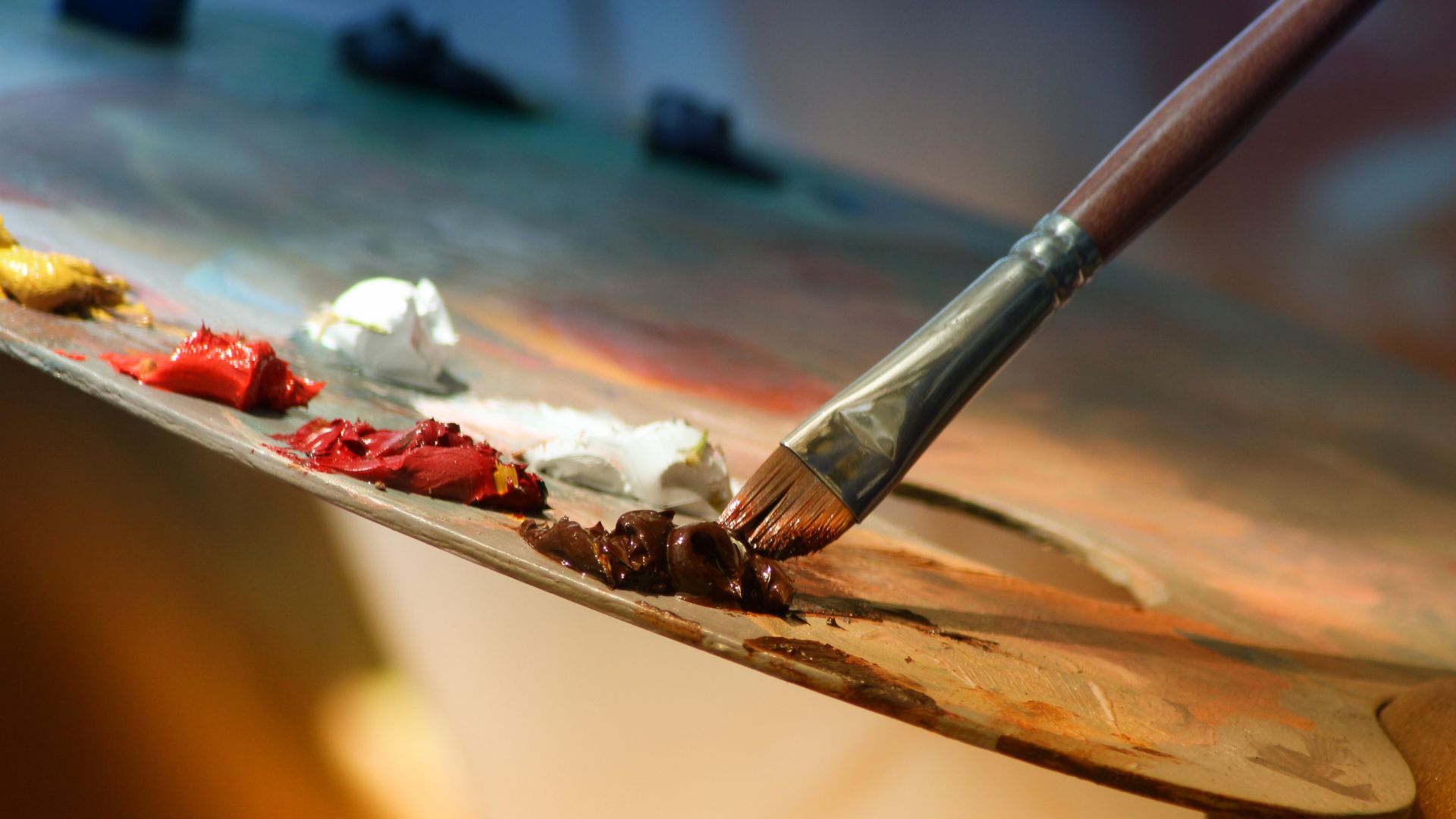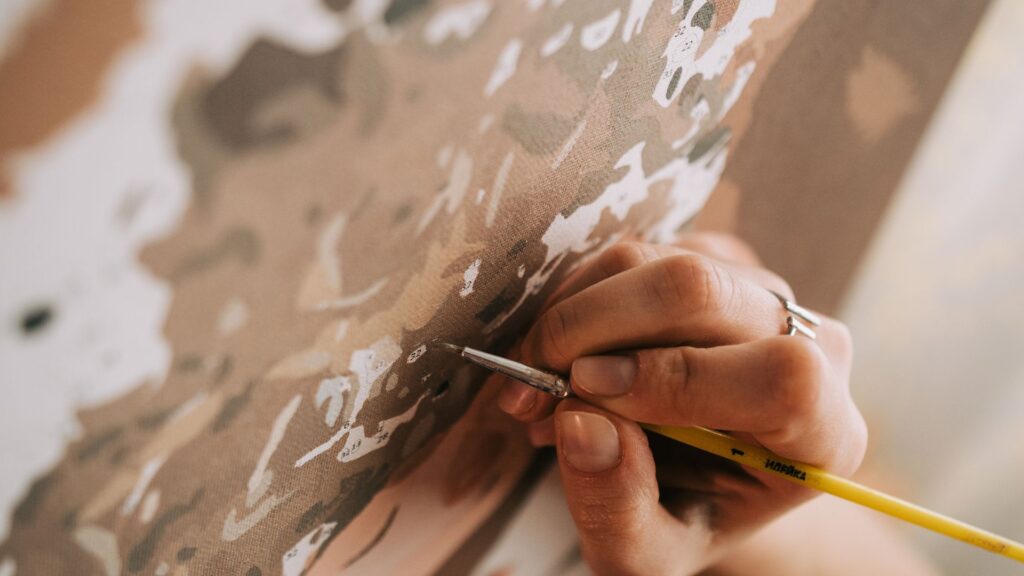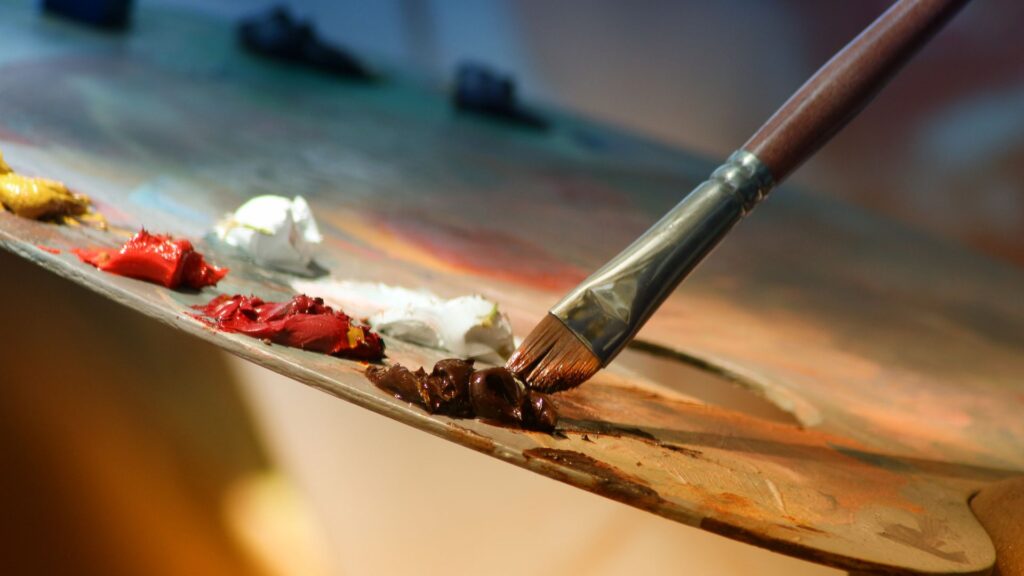
The basics of acrylic painting: A beginner’s guide
Acrylic painting is one of the most popular and versatile forms of art for both beginners and seasoned artists alike. Whether you’re just starting out or looking to expand your skills, acrylics offer a fantastic medium that allows you to experiment with a wide range of techniques, textures, and styles.
In this guide, we’ll cover everything from the basics of acrylic paints to the essential materials you’ll need and the most common mistakes to avoid. So, grab your brushes, and let’s dive into the colourful world of acrylic painting!
Here’s our table of contents:
- Introduction to acrylic paints
- Essential materials for acrylic painting and your shopping list
- Basic techniques
- Common mistakes to avoid
- Exploring acrylic and oil paints: Don’t be afraid

Introduction to acrylic paints
Acrylic paints are water-based, quick-drying, and incredibly versatile, making them ideal for artists of all levels. The fast-drying time is one of the main reasons why many beginners are drawn to acrylics—unlike oils, which can take days or even weeks to dry, acrylics dry to the touch in just minutes. This means you can layer colours quickly and get right into the action without long waiting times.
Acrylics are also incredibly adaptable. You can use them on a variety of surfaces, from canvas and paper to wood and fabric. The paints can be thinned with water for a transparent, fluid effect or used straight from the tube for bold, opaque coverage. This flexibility allows for endless creative possibilities, whether you’re looking to paint in a traditional style or experiment with more abstract techniques. Additionally, acrylics are known for their vibrant colours and the ease with which they blend, allowing you to create everything from smooth gradients to textured, impasto effects.
Essential materials for acrylic painting and your shopping list
Before you get started, you’ll need to gather the right materials. Fortunately, acrylic painting doesn’t require a huge investment to get going. Here’s a basic list of materials to get you started:
Acrylic paints
The first thing you’ll need, of course, is acrylic paint. If you’re a beginner, you don’t need to splurge on high-end professional-grade paints just yet. A basic set of student-grade acrylics will be more than sufficient for practice. Look for a set that includes a variety of colours, including primary colours (red, blue, yellow), white, and black. Over time, you can expand your palette as you learn more about colour mixing.
Brushes
A variety of brushes is essential for acrylic painting, but you don’t need a massive collection to start. A small, medium, and large flat brush, along with a couple of round brushes for detail work, will cover most of your needs. Look for synthetic brushes, as these are specifically designed for acrylic paints and will hold up better than natural brushes.
Canvas or paper
Acrylics can be painted on almost any surface, but canvas and acrylic paper are the most common choices. Canvas is a great option because it provides texture that works well with the paint, but if you’re on a budget, acrylic paper or even mixed media paper can work just as well for practice. You can even experiment with painting on wood or fabric as you get more comfortable with the medium.
Palette and palette knife
You’ll need something to mix your colours on. A flat, non-porous palette is ideal, whether it’s made of plastic, glass, or acrylic. You can also use a palette knife to mix your paints, which helps to achieve a smoother, more even consistency. These tools are relatively inexpensive and will last you a long time.
Water and a rag or sponge
Since acrylic paints are water-based, you’ll need a container of water for cleaning your brushes. A rag or sponge is also useful for wiping off excess paint, cleaning brushes, or drying the canvas. It’s important to keep your brushes clean to prevent the paint from drying in the bristles.

Basic techniques
Once you’ve got your materials ready, it’s time to start painting! Acrylic paints offer a wide range of techniques, but there are a few basic ones that every beginner should know:
Flat washes
One of the most fundamental techniques in acrylic painting is the flat wash, which involves applying a thin, even layer of paint across a surface. You can create this effect by diluting the paint with water or an acrylic medium. This is a great technique for creating backgrounds or skies.
Glazing
Glazing is a technique where you apply thin layers of transparent paint over a dried underpainting. This allows you to build up rich, subtle colour transitions without completely covering the previous layer. It’s a great way to add depth and complexity to your work.
Layering
Acrylics are fantastic for layering, as they dry so quickly. After applying a first layer of paint, you can come back and add additional layers once the previous layer is dry. This is especially useful for creating depth in your paintings, like painting over dark colours with lighter ones to build highlights and shadows.
Blending
Blending is another important technique for acrylics. While acrylics dry quickly, you can extend the working time by using blending mediums or by simply working in small sections at a time. For smoother transitions, work with a damp brush and blend while the paint is still wet.
Common mistakes to avoid
As a beginner, it’s easy to make a few missteps along the way. Here are some common mistakes to watch out for:
Overloading the brush
It can be tempting to load your brush up with too much paint, but this can lead to streaky or uneven coverage. Instead, dip your brush lightly into the paint and build up layers gradually.
Not preparing the surface
Whether you’re working on canvas, paper, or another surface, it’s essential to prepare it properly. This might mean priming your canvas with gesso before starting or making sure your surface is smooth and clean. Skipping this step can lead to uneven paint application and poor adhesion.
Overworking the paint
Acrylics dry quickly, and while that’s great for speed, it also means that you can overwork the paint if you’re not careful. Avoid trying to blend or layer too much once the paint has started to dry. If you want more blending time, consider using a slow-drying medium.
Exploring acrylic and oil paints: Don’t be afraid
Acrylic painting is a fantastic medium to explore, and with its quick drying time, versatility, and vibrant colours, it’s perfect for beginners. The beauty of acrylics is that they offer endless possibilities—whether you’re painting in layers, experimenting with texture, or simply practising basic techniques. So, don’t be afraid to get creative and make mistakes along the way. Every brushstroke is a step towards finding your unique artistic voice.
Acrylic painting is a versatile and beginner-friendly medium that offers endless creative possibilities. With quick drying times, vibrant colours, and a wide range of techniques like glazing, layering, and blending, acrylics allow artists to experiment freely. Whether you’re just starting out or refining your skills, the key is to practice, embrace mistakes, and enjoy the journey of discovering your unique artistic style.
The most important thing is to keep practising. With time and patience, you’ll become more comfortable with the medium and develop your own style. So, grab your brushes, dive into your next painting, and most importantly—have fun! Happy painting!